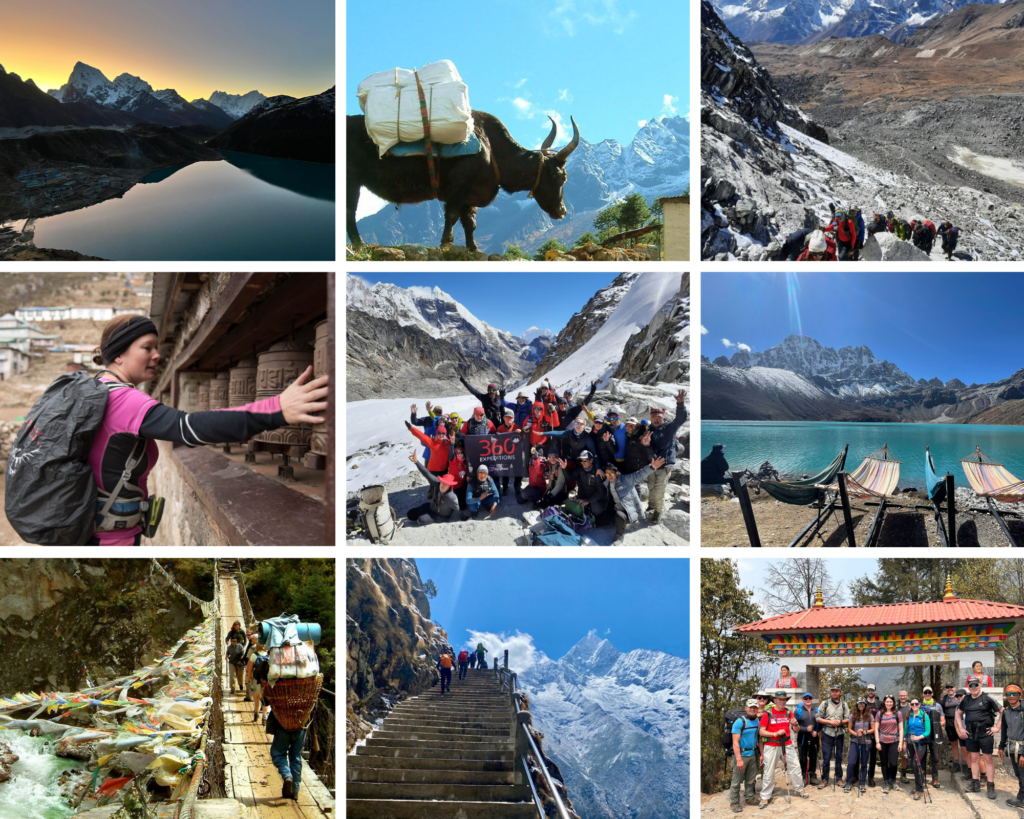Best known as the departure point for ascents of the world’s greatest summit, Everest Base Camp (EBC) is a fascinating destination in its own right and the subject of one of the most iconic trekking routes on the planet. Over roughly two weeks, the Everest Base Camp Trek takes you ever higher through breathtaking Himalayan landscapes, where staggeringly beautiful peaks puncture the sky, colourful prayer flags flutter in the wind and the sheer geological scope of the surrounding terrain makes for an unforgettable, otherworldly experience.
At 5,364 metres, Everest Base Camp is one of the most rewarding trekking adventures you can have in the high mountains. Challenging but not overly technical, it takes you to the top of the world and altitudes you never thought you would see. In this ultimate guide to Everest Base Camp, we examine every aspect of the trek, from which routes you can take to where you can stay and what trekking permits you need.
Where is Everest Base Camp?
Technically, there are two Everest Base Camps. The North Base Camp is on the Tibetan side of the border and used by climbers summiting via the northeast ridge. The South Base Camp sits on the Nepalese side of the border, providing access to the southeast ridge and the summit. When you hear people talk about Everest Base Camp and the EBC Trek, it is almost always in reference to the South Base Camp.
The South Base Camp is approximately 150 km west of the ancient Nepalese capital, Kathmandu. A chaotic, cultural heavyweight with an intriguing history and a mouthwatering culinary scene, Kathmandu is a delight to explore and the gateway to the Himalayas for most trekkers.
Between Kathmandu and Everest lies Lukla, a small town with a notoriously short and steep airport, where the trekking typically begins in earnest. Further north-west, you will encounter Namche Bazaar, the Sherpa capital and a trading and trekking hub that occasionally offers fantastic insights into the unique Sherpa culture. To the north of Namche Bazaar is Gokyo Ri, home to some of the most breathtaking mountain vistas in the region and the turquoise waters of several blissfully peaceful glacial lakes. To the northeast, standing tall, is Everest.
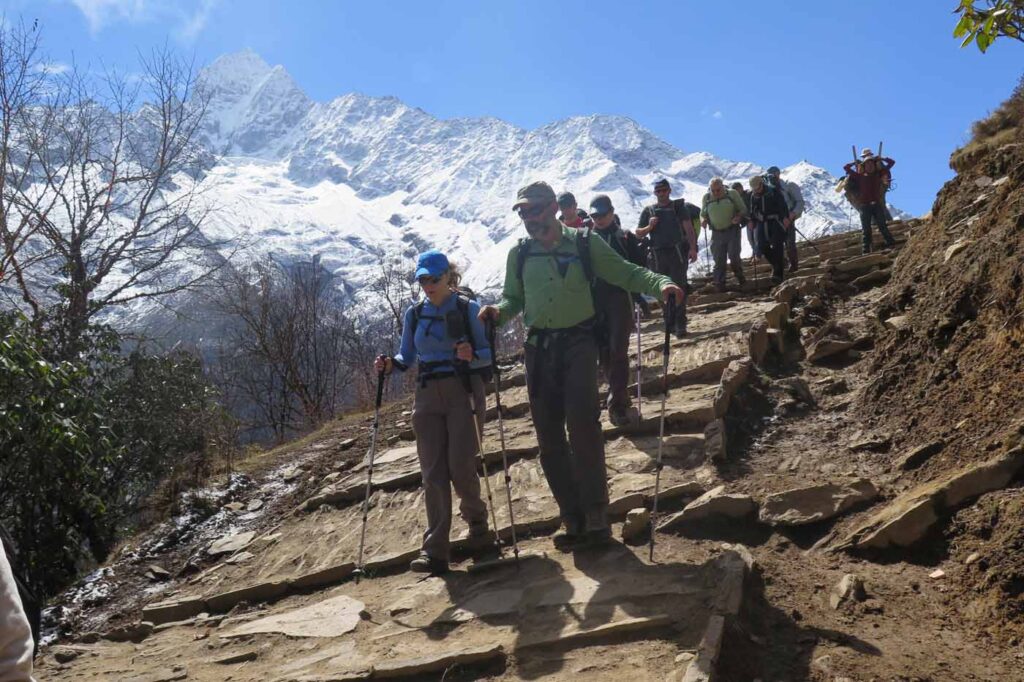
Understanding EBC routes
If you are tackling EBC, you have several routes to choose from.
The Classic route
The “Classic” route sees you trek from Lukla to Everest Base Camp via Tengboche, Pangboche, Lobuche and Gorak Shep. It’s an out-and-back route with a total distance of approximately 106 km. As it is the most traditional route, it is the busiest option and you can expect to share the trail with a fair few other trekkers. It’s also the quickest route, so ideal for those trekking to a strict schedule or with time limitations.
Gokyo Lakes and EBC route
If you can take a little longer and want to get the most from your EBC experience, we recommend the Gokyo Lakes route. The route diverges from the Classic route to visit the Gokyo Valley, a strikingly picturesque and peaceful area separated from the Everest region by a snowy pass.
The Gokyo Lakes are irresistible and unbelievably photogenic, while the views of Everest from the top of Gokyo Ri surpass anything you will encounter on other routes. This is a place of peace and quiet contemplation, overlooked by some of the most majestic mountains in the world, including the tinted slopes of the Turquoise Goddess, Cho Oyu.
Following the Gokyo Valley, the trek continues to Everest Base Camp, takes in the iconic Khumbu Icefall and provides another view of Everest from atop Kala Pattar, before descending through the Khumbu Valley. It is a truly special route that is significantly less busy than the Classic route, and encompasses some of the most serene and spectacular landscapes in the Himalayas.
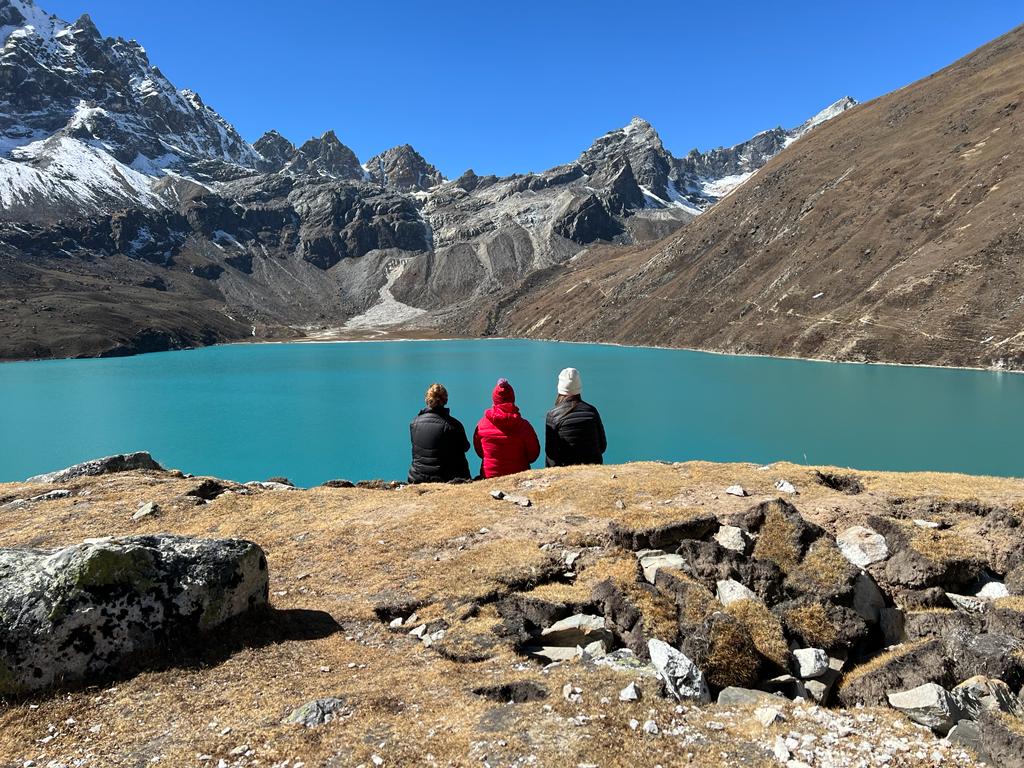
EBC and Three Passes route
This is the trickiest of the main EBC routes and requires much better fitness and technical skills. It consists of a large loop through the Himalayas and takes in the Kongma La, Cho La and Renjo La mountain passes. Specialist mountaineering equipment, such as crampons, is usually required and it demands a lot more of trekkers. However, it rewards you with excellent views and some of the quietest trails in the Sagarmatha National Park. Overall, this is more of a mountaineering route than a trek and is far less popular than the other two options.
How difficult is EBC?
As our brief route overviews hint at, the fitness level and technical skills required to complete the EBC Trek depend on the route you select. In general, the Classic and Gokyo Lakes routes are considered achievable treks for those who are relatively fit and have some trekking experience. The Three Passes route is far more physically and technically demanding.
Most people looking to complete the EBC Trek will opt for either the Classic or Gokyo Lakes route. They tend to strike the perfect balance between challenging and achievable and are well suited to those who want to immerse themselves in the experience and enjoy the adventure without being pushed to the absolute limit.
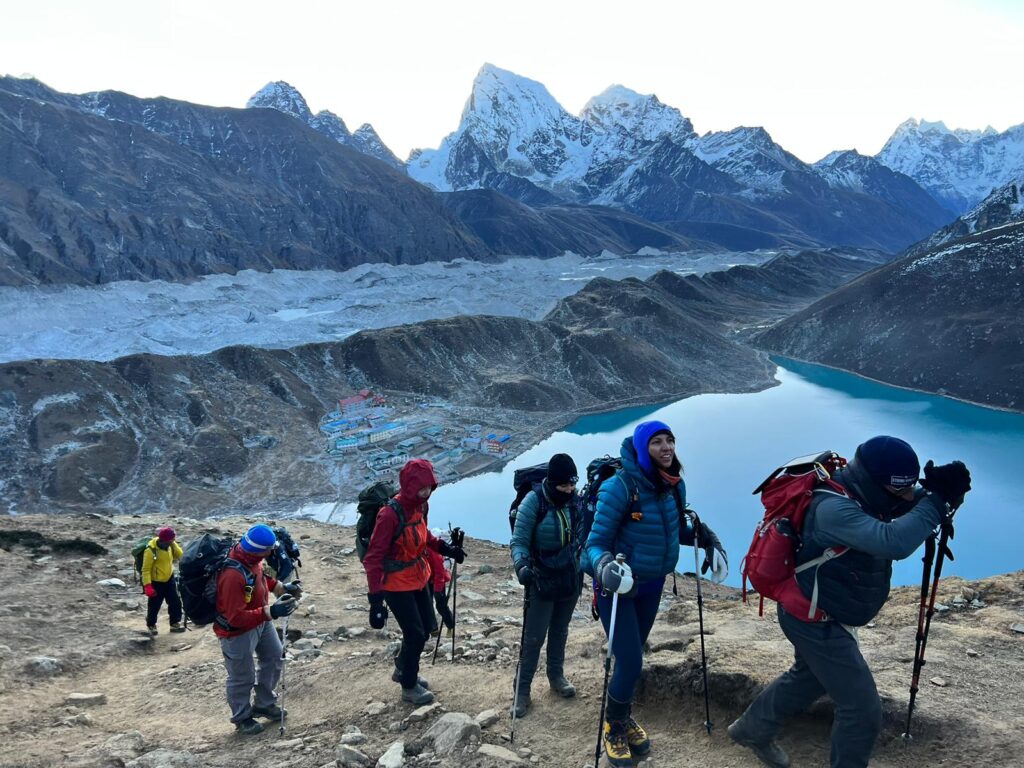
What level of fitness is required?
Of course, the fitter you are, the less arduous the trek will be and the more you can enjoy it. With this in mind, performing pre-trek training pays dividends when it comes time to throw on your backpack and lace up your boots. Working on your cardiovascular fitness and ensuring you are accustomed to long walks (more than six hours is preferable) carrying a rucksack that weighs around 10 kg is a great way to prepare. Try to increase the duration and frequency of your training activities as the trek approaches.
At 360 Expeditions, we have devised expedition-specific training programmes to help trekkers get ready for the adventure of a lifetime. Equipped with a coherent plan, you can ensure you are physically and mentally prepared. Following the programme also improves trekkers’ confidence, as they know their pre-trek prep has been more than adequate.
Are there any other challenges?
On the EBC Trek, the two issues that trouble some participants are altitude sickness and stomach problems. In the vast majority of cases, stomach problems are the result of too relaxed an approach to personal hygiene. Always ensure you clean your hands with an antibacterial handwash or gel before eating, be more conscious of maintaining good hygiene when using bathrooms and you should be fine.
Altitude sickness is more complex but no less avoidable. For instance, on the 360 Expeditions trek, we factor in acclimatisation days in Namche Bazaar and the Gokyo Valley to minimise the likelihood of altitude sickness. Despite this, some trekkers still suffer from nausea, headaches and vomiting. While this may sound concerning, experienced mountain leaders can help manage the acclimatisation process and relieve symptoms.
To prevent altitude sickness, make sure you:
- Stay hydrated
- Walk at a comfortable pace
- Keep warm
- Fuel yourself appropriately.
A course of Diamox or similar high-altitude drug is valuable but should be used as treatment rather than a preventative measure.
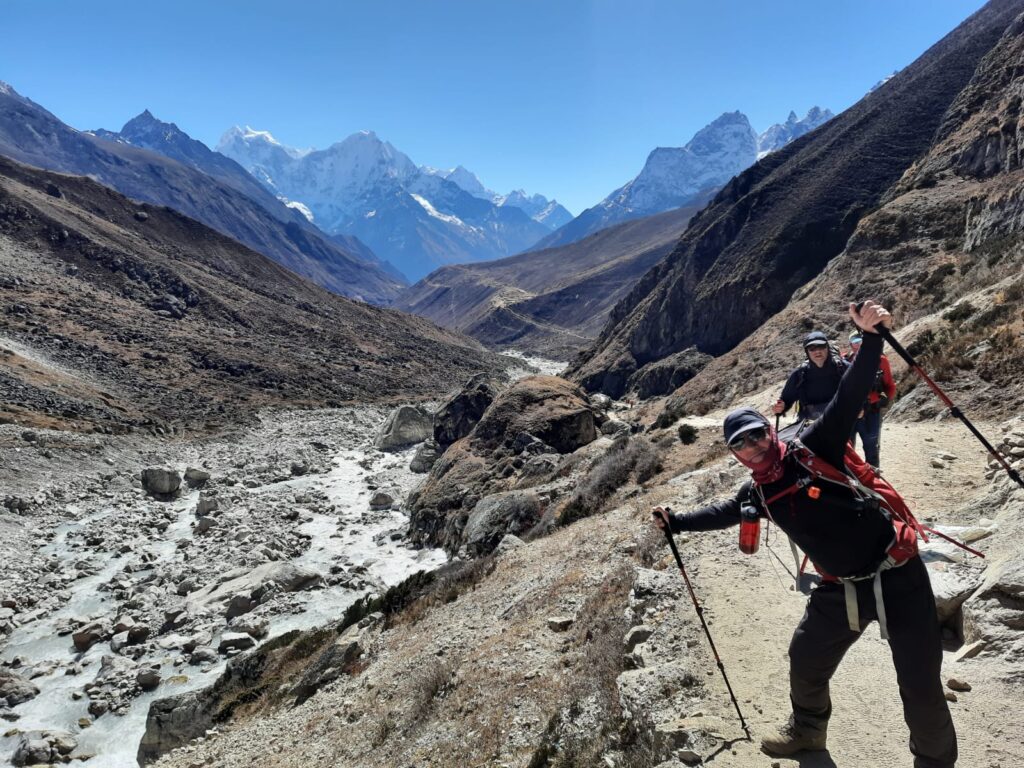
When to trek the EBC?
For the EBC Trek, optimal conditions typically occur between late March and early June. At this time of year, daytime temperatures are at their warmest and there is less cloud cover. Alternatively, late September through to December sees cooler daytime temperatures but conditions tend to remain clear. Take a look at 360’s trek dates.
Should you trek with a local guide or with an experienced western trekking organisation?
It all comes down to personal preference. Going local is often cheaper but there is a lot to organise and you won’t benefit from the established relationships a tour organiser has with local businesses, guides and porters. There are also far more unknowns and potential pitfalls to contend with as a solo traveller.
If you prefer your own company and don’t mind dedicating a serious chunk of time to planning and organising, going local is feasible. However, if you enjoy the camaraderie of a small group and don’t want the stress of having to worry about every little detail, going through an established trek organiser is the best option. They sort everything out for you, handle any mishaps out in the mountains and work with people who know the region intimately, allowing you to relax and dedicate every ounce of energy to enjoying the experience.
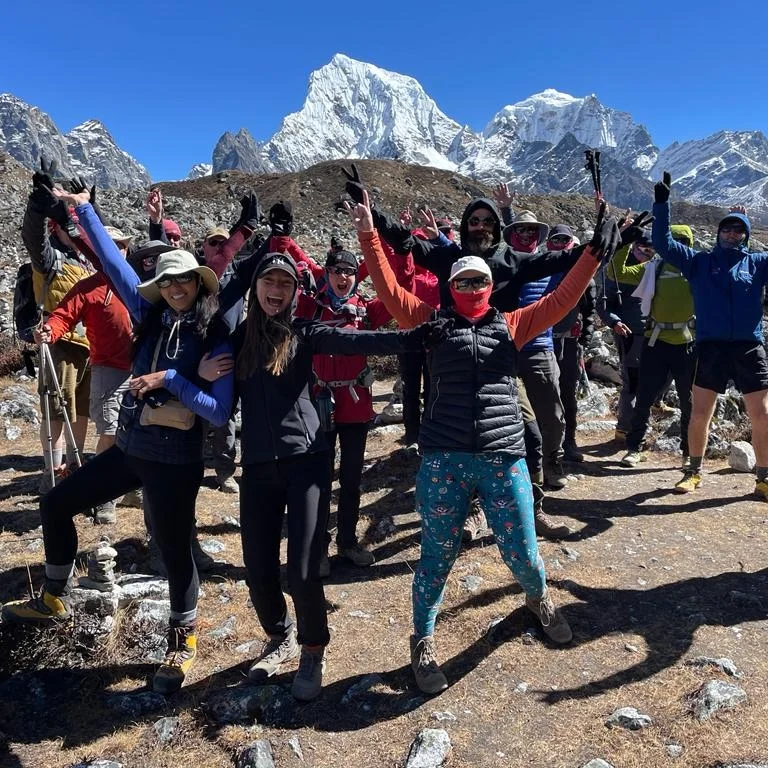
Arrival and departure
Almost all EBC trekkers use Kathmandu as a hub and make their way to Lukla to start the trek. Traditionally, this involved a flight from the capital to Lukla. However, in October 2022, the Civil Aviation Authority of Nepal declared that the route was becoming too busy and no flights between Kathmandu and Lukla would operate during peak trekking season. They defined this period as running from the 1st of April to the 30th of May and the 1st of October to the 30th of November. Instead, flights would run from Manthali Airport in Ramechhap to Lukla.
It is possible to trek from Kathmandu to Lukla but this adds three or four days to your trip. For this reason, most people opt to fly. At 360 Expeditions, we book all participants’ flights on their behalf and confirm flight details approximately eight weeks before departure. Check out our EBC via Gokyo Lakes itinerary.
Accommodation – Teahouse to teahouse
Almost all accommodation on the EBC Trek is in teahouses. These are relatively simple but comfortable lodges that provide you with a place to sleep and meals. The teahouses typically centre on a social dining room, warmed by a substantial fire, where you can sit, socialise and eat with your fellow guests.
In terms of amenities, the teahouses tend to become more basic as you gain altitude and get closer to Everest Base Camp. From Namche Bazaar onwards, guests usually have to pay for hot showers and many teahouses only offer bucket showers. Depending on when you are travelling, you may find it is too cold to shower and a rapid dry wash with wet wipes or flannels is your best bet. Many teahouses will allow you to charge your electrical devices for a small fee but there are no plugs in the rooms.
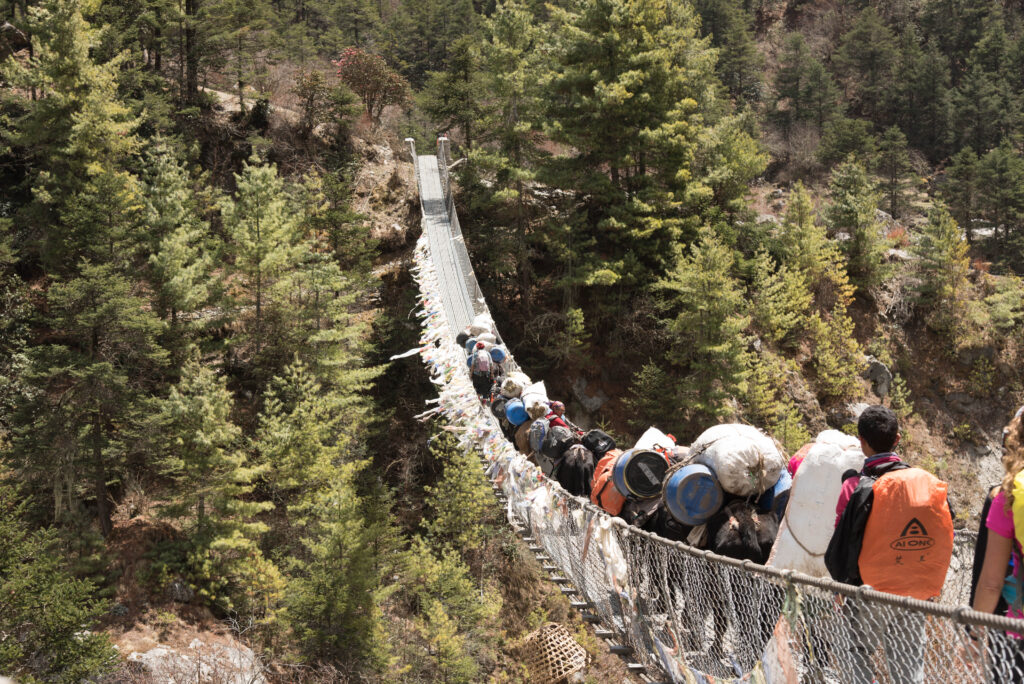
Food on the EBC Trek
Considering a large amount of the food has to be brought up to altitude on foot or by yak, the food at the teahouses is good and there is a surprising amount of variety. While you will find all sorts of Western dishes, including pizza, burgers and spaghetti, traditional Nepalese cooking is excellent. From steaming momos (dumplings) to hearty Syakpa (Sherpa stew), it’s designed to sustain people operating in colder temperatures and at higher altitudes.
However, the indisputable star of the show is Dal Bhat. Often considered the Nepalese national dish, it consists of lentil soup, rice and several sides, most often veg curry, pickles, greens and poppadoms. It’s a Sherpa staple and most teahouses offer you a bottomless portion, so you can always go back for more dal if you’re feeling hungry.
How much money do you need while trekking?
If you are trekking as part of an organised group excursion, the vast majority of costs will usually be included in the price of the trip. However, it is always a good idea to discuss costs with the organiser to ensure you know what is included and that there are no hidden costs or surprises.
If you are travelling solo, costs vary significantly depending on whether you go completely independently or employ a local guide and porter. A minimum budget of approximately $700 for a completely independent trek is realistic, rising to around $1,400 for a solo trek with a guide and a porter.
The general rule of thumb is that things get more expensive the higher you ascend, so make sure you factor that into your calculations.
What clothing and equipment is required?
We have published a full kit list for 360 Expedition trekkers heading to Everest Base Camp. It contains everything you will need for the journey, including bags, sleeping gear, headwear, clothing, footwear, toiletries and other essentials, such as a copy of your passport, visas and travel insurance.
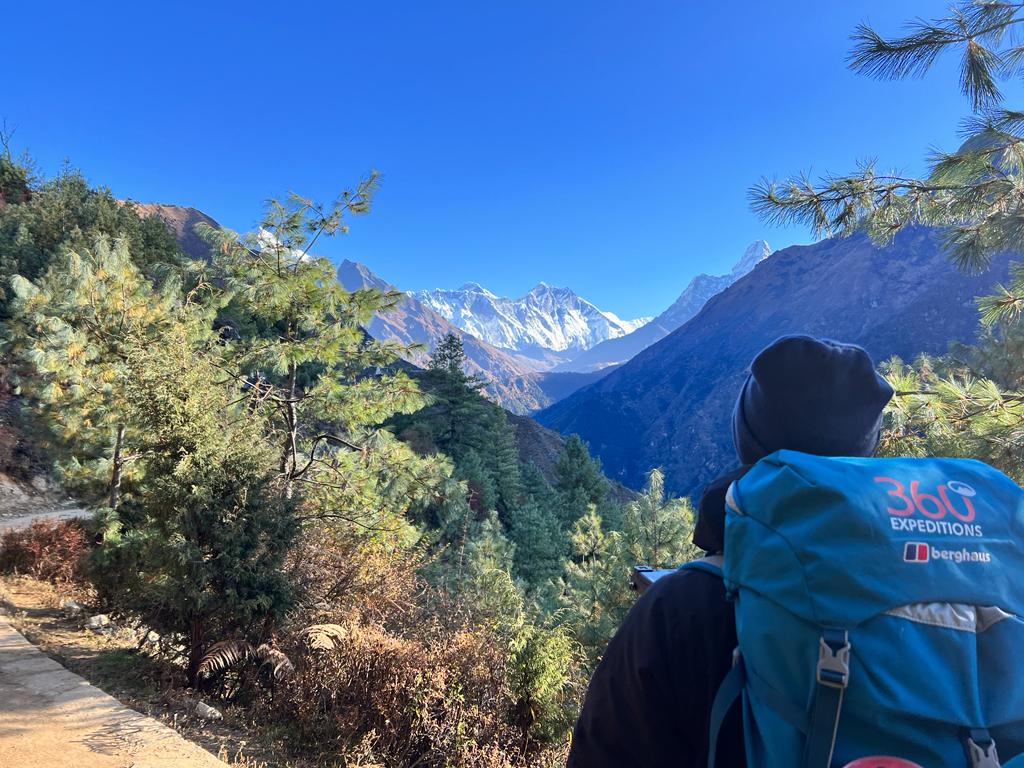
Visas and trekking permits
Which brings us nicely to the less glamorous side of trip planning (and one of the areas where you really benefit from a professional organising your trek for you) – visas, permits and all the accompanying bureaucracy.
All foreign nationals need a visa to enter Nepal. You can apply for this before you depart but you may need to go to the Nepalese Embassy to collect your visa. You can also apply for your visa on arrival. This is usually easy and pain-free, with electronic visa booths in Kathmandu airport taking all the hassle out of the process. A 30-day visa costs $50.
You will also need two trekking permits. You can purchase the Khumbu Rural Municipality Permit in Lukla at a cost of around $20. The Sagarmatha National Park Entry Permit is available for approximately $25 at the Department of National Park and Wildlife Conservation (DNPWC) in Kathmandu or the park entrance in Monjo. If you travel with an organisation like 360 Expeditions, these will often be included in the price.
Travel Insurance
Individual travel insurance is necessary for both solo travellers and those on organised treks. In the case of the latter, almost all companies will make insurance compulsory. That said, they will often partner with an insurance provider, making coverage more affordable and easy to acquire. In the case of 360 Expeditions, we partner with the brilliant True Traveller.
In case of emergency, the only way to get medical assistance quickly is via helicopter evacuation. With this in mind, ensure your policy covers medical evacuation and protects you to the required elevation.
What vaccinations are required?
While these are not legally required, we recommend the following vaccinations before travel:
- Hepatitis A
- Typhoid
- Diphtheria
- Tetanus
- Polio
EBC Trek with 360 Expeditions
At 360 Expeditions, we operate a popular Everest Base Camp and Gokyo Lakes trekking adventure. Designed to introduce you to the region’s natural splendour in a gentle way, with plenty of time for acclimatising and a strong support network, the expedition takes place over 19 days. Following the Gokyo Lakes and EBC route detailed in this guide, it provides an unparalleled opportunity to explore some of the area’s lesser-known treasures and walk quieter trails without missing out on any of the highlights along the Classic route.
To learn more about our expedition, check out our dedicated EBC Trek page for a full itinerary, kit list and FAQs. You can also get in touch to discuss this or any other of our trekking adventures. We would love to hear from you.
